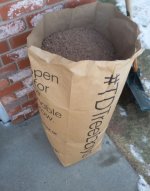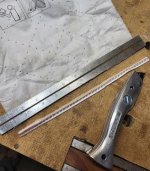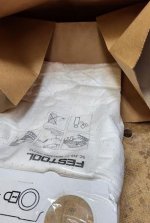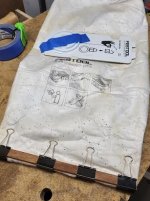[member=57948]ChuckS[/member]
Please remember that these extractors and accessories/consumables are designed/engineered and made in Germany, to be used by tradesman in a commercial setting under "jurisdiction" of the state owned accident prevention and insurance association.
For certain tradesman, especially but not limited to those employed, there are certain rules set out by the state owned insurer, they and the employer need to abide by. My command of the english language is not nearly sufficient to go into all these details.
But in this context dust classifications exist:
L = light hazard
M = medium hazard
H = high hazard
Longlife filter bags are only to be used for L classification. Basically that rules out any wood dust.
For wood dust M classification is needed. That means not only better filters but for example also an alarm if flow is obstructed among other things and that the filter bag can be disposed off (close to) dust free. Hence the instructions to close the lid before taking out the filter bag.
With H classification dust free disposal is a must.
Festool's (other's as well) extractors are special in that regard, that even the L classification extractors come with M classification filters installed.
So what you do when you dispose the contents of the long life bag, you expose yourself to the dust again. Of course you can avoid some, you can wear PPE - but basically all measures you took beforehand are now nil and void.
Festool has no choice but to say L classification only for the long life bags. And that deems them pretty much unusable in a German commercial setting when employees and employer are insured by/ fall under the "jurisdiction" of the state owned accident prevention and insurance association.
The broad consensus I have heard & read over the years is that with tools like planers and the like you can use the long life bag because there is much less dust/fine dust compared to sanding. It's still not permitted by the insurer, but everyone who does not fall under their "jurisdiction" is obviously free to do it. And the long life bags work very, very well for that - many, many people tradesman and hobbyists alike do it.
With a lot of fine dust, and plaster ist by far worst, the long life bags will clog. You will not notice immediately but over time. You can try to wash them, some use pressured air, you can use the manual filter cleaning on the extractor to really hit that bag hard - but at some point they are just done - because they are not meant to work with fine dust. And again, with most methods of trying to clean them, you expose yourself to the dust again that it was supposed to keep in first place.
I take this very, very seriously because I have seen, through my own bodily functions, what happens when you have been exposed to this dust. (I snotted violet for days after sanding Dalbergia cearensis without any pre cautions, and another time black because I went through multiple cutting discs on an angle grinder, both times without any precautions/PPE because I simply didn't know better back then.)
This is really not about having a certain type filter in your extractor, that is not the problem. The filter inside your extractor will hold the dust inside. It's solely about the exposure when emptying and trying to clean either of the bags. From a health and safety perspective it makes no sense to first collect and contain everything, but then expose yourself to it while disposing or cleaning.
For the same reason Festool offers bags for the separator. Disposal is "regulated" on M classification as I said before, without them the separator is not rated M anymore. And again, use the separator only with a planer (or other more shaving/chipping creating tools) and go without that bag, just like so many do with the DD, no problem. Fine dust in either without a bag to dispose it? No, thanks.
Kind regards,
Oliver





